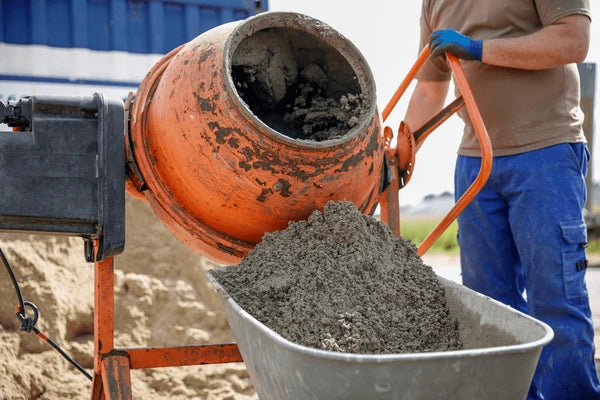Concrete Mixers
Concrete Mixers

Concrete mixers are the unsung heroes of construction—delivering perfectly blended cement, sand, aggregates, and water for projects of every size. Whether manual or automated, drum or pan, these machines ensure consistent batches that support safe, durable structures. Let’s explore their types, components, maintenance, and selection tips for maximum efficiency.
The Role of Concrete Mixers in Construction
Concrete mixers play a vital role in:
- Consistent quality: Uniform batches prevent weak spots
- Productivity: Faster mixing equals smoother workflows
- Structural integrity: Even mixing guarantees strong, reliable builds
- Efficiency: Fewer delays, fewer manual errors
On busy job sites, a reliable mixer keeps things moving and ensures every pour performs.
Components That Make It Work
| Component | Function |
|---|---|
| Drum design | Rotates and circulates the mix evenly |
| Mixing fins/blades | Lift and fold the mixture for consistency |
| Motor/drive system | Powers drum rotation at controlled speeds |
Each part is designed to promote efficiency and prevent buildup or clumps.
Types of Concrete Mixers
| Mixer Type | Ideal Use |
|---|---|
| Drum mixers | Large-volume jobs, continuous mixing |
| Pan mixers | Small batches, precast production, stiff mixes |
| Manual mixers | Small repairs, low-budget projects |
| Automated mixers | Large-scale builds with consistent demand |
Choose the one that fits your job size, batch needs, and mixing frequency.
Manual vs. Automated: What’s the Difference?
Manual mixers:
- Require human effort and monitoring
- Lower cost, more flexible
- Best for DIY or light-duty tasks
Automated mixers:
- Faster, more consistent output
- Higher upfront cost but better long-term efficiency
- Ideal for commercial and industrial projects
Mix smarter—not harder.
How to Choose the Right Mixer
Consider:
- Capacity: Match batch volume to project scale
- Portability: Smaller mixers are easier to move
- Mixing efficiency: Blades and motor must handle intended mix type
- Durability: Choose high-quality construction and reliable parts
- Power source: Electric for indoor jobs; gas for remote sites
It’s not just about price—it’s about performance and fit.
Maintenance Tips
Keep your mixer running with regular care:
- Clean immediately after use to prevent hardened buildup
- Check bolts and fasteners weekly
- Lubricate moving parts like bearings and gears
- Inspect belts, cords, and motor monthly
- Store dry and covered to avoid rust or motor damage
A little TLC = a longer lifespan and better results.
Safety Guidelines
Stay safe:
- Wear gloves, goggles, and boots
- Keep area clear of tripping hazards
- Never reach into a rotating drum
- Disconnect power before cleaning
- Train all users in proper operation
Safety isn’t optional—it’s essential.
Frequently Asked Questions
Can concrete mixers be rented short-term?
Yes—rentals are perfect for temporary jobs, saving money and storage space.
Are mixers environmentally friendly?
Newer models offer fuel efficiency and lower emissions. Choose wisely to reduce impact.
Can mixers be used for other materials?
Absolutely—mortar, plaster, compost, and even animal feed in some cases.
Do mixers require transport permits?
If oversized, yes. Always check local regulations before moving heavy machinery.
What’s the typical lifespan of a concrete mixer?
With regular maintenance, expect 10–15 years of reliable use.
Final Thoughts
Whether you're pouring a patio or building a high-rise, concrete mixers keep your materials—and your schedule—in line. Invest in the right type, treat it well, and follow safety rules to unlock years of dependable performance. In the world of construction, nothing beats the sound of a drum turning and a project coming to life.




